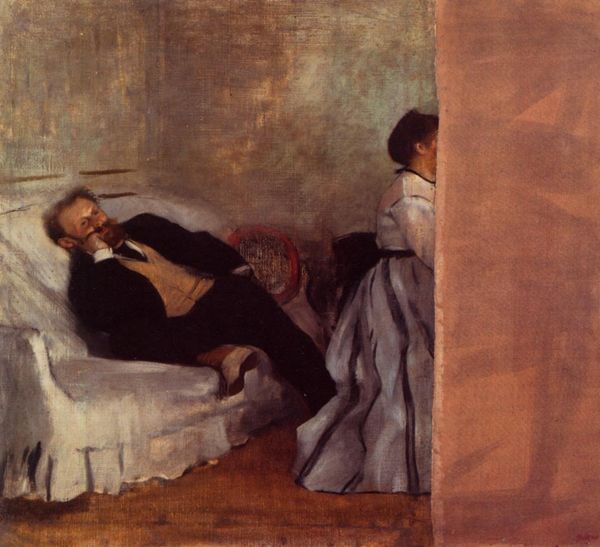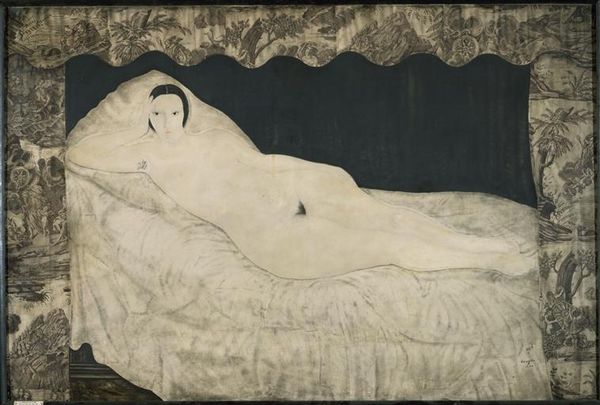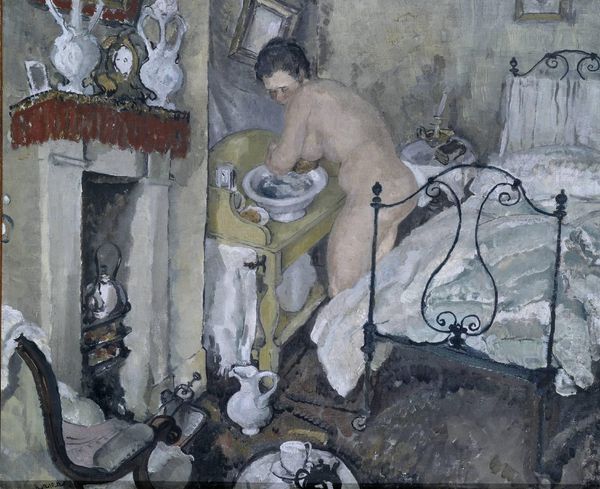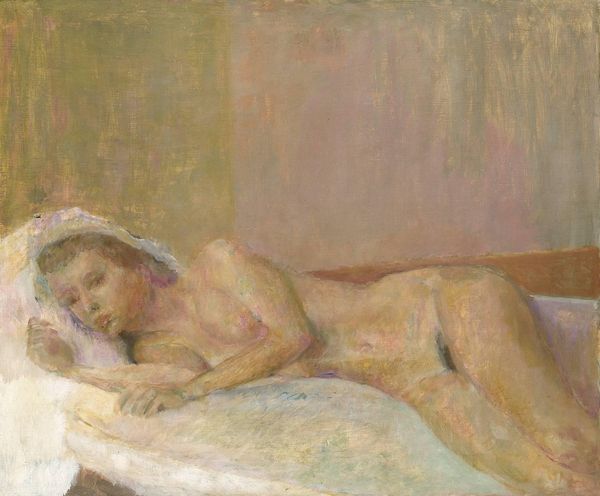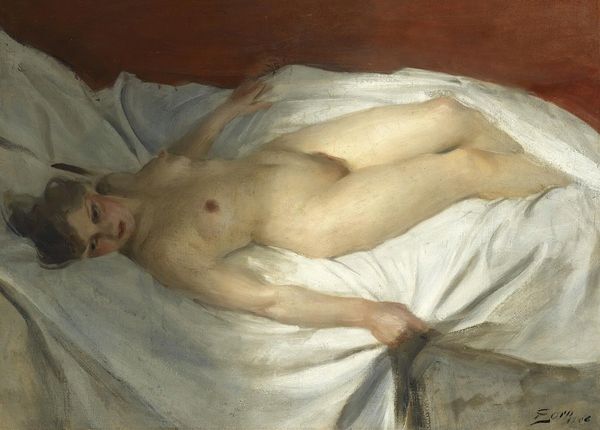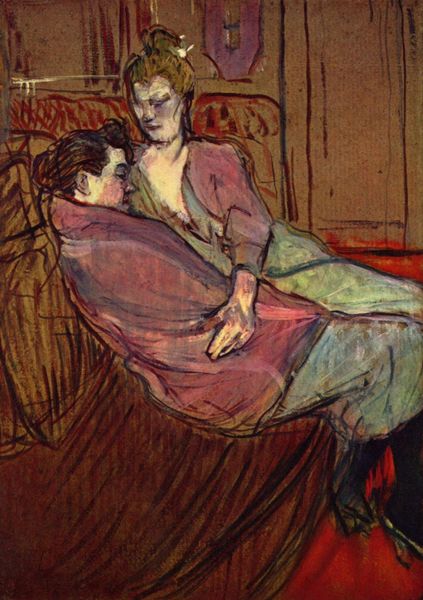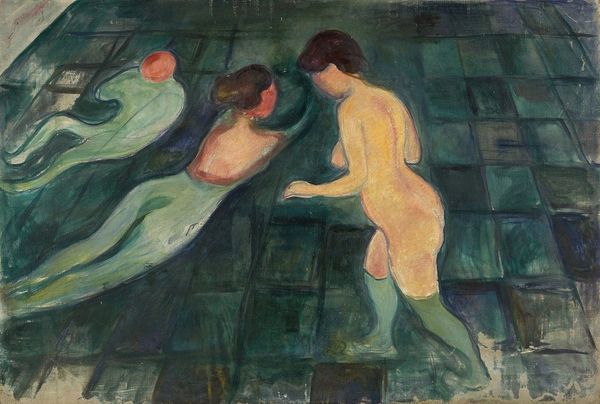
painting, oil-paint
#
portrait
#
painting
#
oil-paint
#
landscape
#
figuration
#
neo expressionist
#
intimism
#
underpainting
#
muted green
#
painting painterly
#
symbolism
#
nude
Dimensions: 99 x 155 cm
Copyright: Public domain
Editor: Let's turn our attention to "Melancholy," painted by Magnus Enckell around 1895. Done with oil paints, it’s... striking. It has such a stillness about it, yet there’s also this undeniable tension, this feeling of unease almost. What do you make of it? Curator: Ah, Enckell. What a moody magician with paint! To me, this whispers of that late 19th-century turn-of-the-century gloom. A weariness of spirit, perhaps, with a touch of, dare I say, decadent languor? Notice how the figures aren't quite interacting? Their gazes averted, lost in private worlds... it’s as if they're islands of emotion adrift on a muted green sea. Does it make you think about relationships? Editor: I suppose it does, in the sense that something feels very disconnected between the figures. Like a silent scream. Do you think it’s a stretch to read something homoerotic into it, given the period and the artist? Curator: Not a stretch at all! Enckell, along with his peers, were gently pushing against the rigid boundaries of societal norms. It's subtle, certainly. Yet those barely-there, ghostly trees...almost a yearning for a more natural, perhaps a more openly expressive state? Do you see the implied underpainting as another way he's making a quiet statement? Editor: It's fascinating to see how much you can unpack from what seems like a simple, subdued painting. It makes me look at it with completely new eyes now. I noticed the landscape, but never really considered how it contributed to the feeling. Curator: Art is always a conversation, a dialogue. Not just with the artist, but with ourselves. Seeing how it speaks across time is the real magic, isn't it? Editor: Absolutely. I’m going to carry this expanded sense of nuance with me. Thanks!
Comments
No comments
Be the first to comment and join the conversation on the ultimate creative platform.
